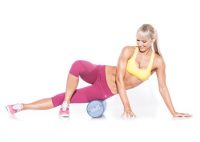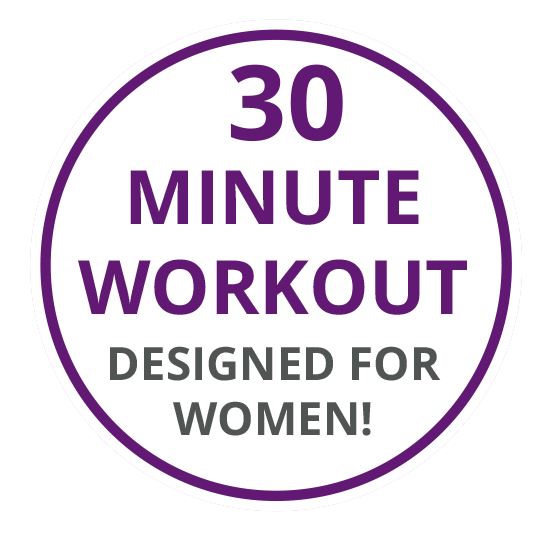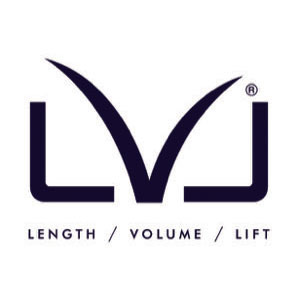8 things that you can do with a FOAM ROLLER
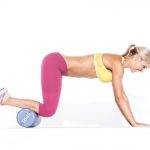 1 Foam Roller Shins
1 Foam Roller Shins
* Start: Start on your hands and knees on the floor, with the wider part of the foam roller underneath your shins; your hands should be positioned just in front of your shoulders on the ground, and your heels rotated slightly outward.
* Roll: Move your weight forward, bringing your shoulders in front of your hands, to move the roller from your ankles to just below your knees.
* Tip: Don’t roll directly onto your knees – this can cause discomfort and cause injuries.
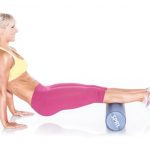 2 Foam Roller Calves
2 Foam Roller Calves
* Start: Sit on the floor with the roller underneath your calves. Place your hands on the floor behind you and raise your bottom off the floor – all of your body weight should be on your hands and the roller.
* Roll: Slowly roll forward and back to move the roller up and down from just below the knee to above your ankles.
* Tip: To up the intensity, do the move one side at a time by stacking your legs. To change the emphasis or try turning your feet in or out as you roll.
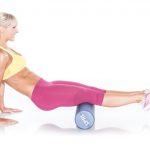 3 Hamstrings and Glutes
3 Hamstrings and Glutes
* Start: Sit with your legs extended in front of you and the broad side of a roller positioned directly under your thighs. Place your hands flat on the floor behind you for support.
* Roll: Using your arms to initiate the motion, slowly roll back and forth to move the roller up and down from the bottom of your glutes to just above your knees.
* Tip: As you roll, try rotating your legs in and out from the hips – this will allow you to hit your hamstrings more thoroughly
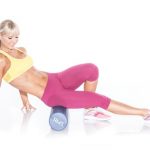 4 Glutes
4 Glutes
* Start: Sit on the floor with your legs straight. Extend your arms to lift your glutes, place the broad side of a foam roller under your butt, and bend one leg and angle your body so one cheek bears the brunt of your weight.
* Roll: Move your glute back and forth across the roller (keep in mind that the range of motion will be small). When your time is up, shift your weight to the other side and repeat.
* Tip: Press through your palms and move through your shoulders to shift forward and back.
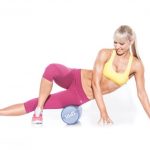 5 Foam Roller Iliotobial (IT) Band
5 Foam Roller Iliotobial (IT) Band
* Start: Position your left hip against the broad side of a roller on the floor. Cross your right leg over your left as shown, and put both hands on the ground for support.
* Roll: Using your left arm to assist the motion, roll your thigh back and forth over the roller from just below your hip to above your knee. Continue rolling for the allotted time, then switch positions to work your right leg.
* Tip: If you need more pressure to loosen things up, stack your legs – but keep in mind that your stability will be challenged.
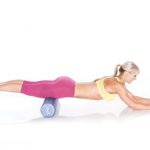 6 Foam Roller Quadriceps
6 Foam Roller Quadriceps
* Start: Lie face down with the roller positioned directly under your thighs. Bend your elbows so that your forearms are flat on the floor to support your weight – your feet should be suspended above the floor as shown.
* Roll: Keeping your abs drawn in and core muscles tight, use your arms to gently roll your body forward and back to move the roller up and down from your pelvic bone to just above your knees.
* Tip: Want to increase the intensity and really get at that ache? Stack your feet to roll one quad at a time
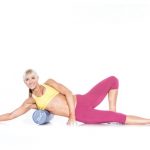 7 Foam Roller Latissimus Dorsi
7 Foam Roller Latissimus Dorsi
* Start: Lie on your right side with your right arm extended along the floor as shown, and the roller directly under your right armpit – the roller should be perpendicular to your body. Bend your left arm and lightly place your left hand on the floor for support.
* Roll: Roll up and down so the roller moves from your armpit to just above your waist. Once you’re finished, switch positions to work your left side.
* Tip: Keep the thumb of your extended arm pointed up towards the ceiling – this puts your arm in a position that helps pre-stretch your lats.
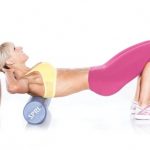 8 Foam Roller Upper Back (Thoracic Spine)
8 Foam Roller Upper Back (Thoracic Spine)
* Start: Rest your back against the roller positioned underneath your shoulder blades. Bend your knees so your feet are flat on the floor. Lift your bottom and place your hands behind your head, or cross your arms over your chest.
* Roll: Keeping your core muscles tight, slowly roll forward and back so that the roller moves up and down between the middle of your back and the top of your shoulder blades.
* Tip: Avoid tilting your head forward and looking at your legs as you roll – this may place stress on the spine. Ensure your head and neck are in line with your back at all times.

